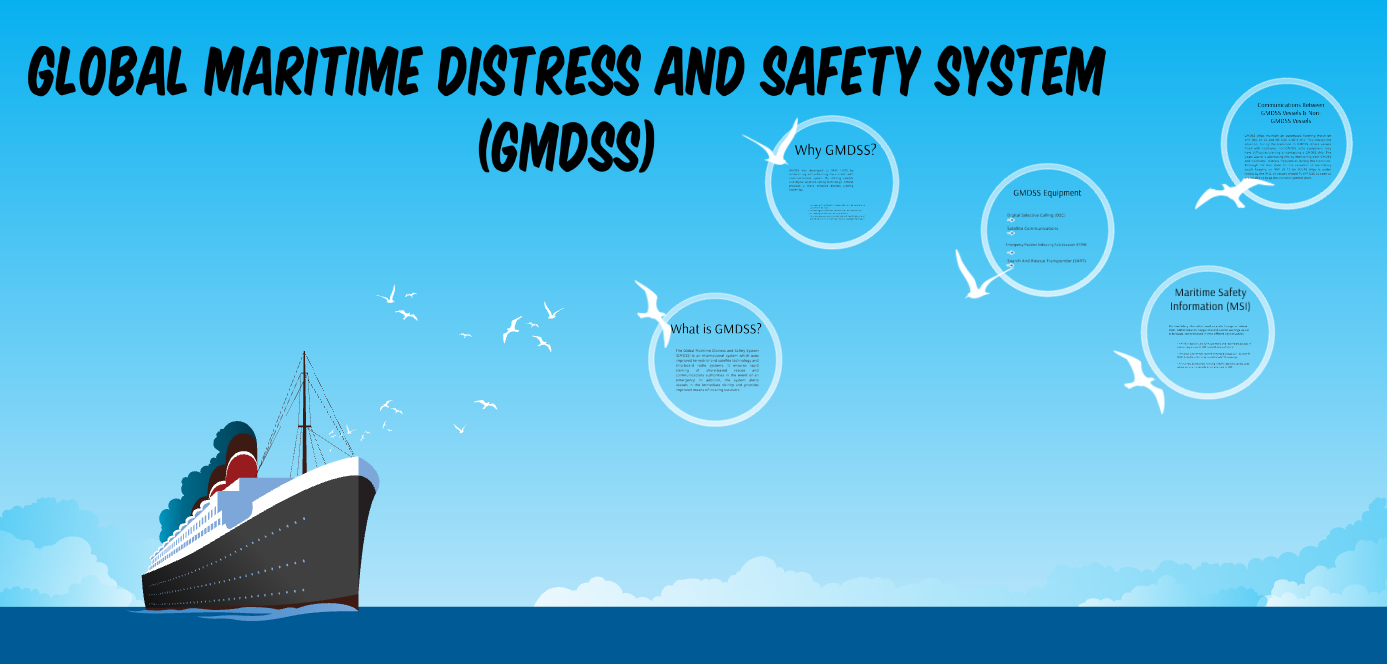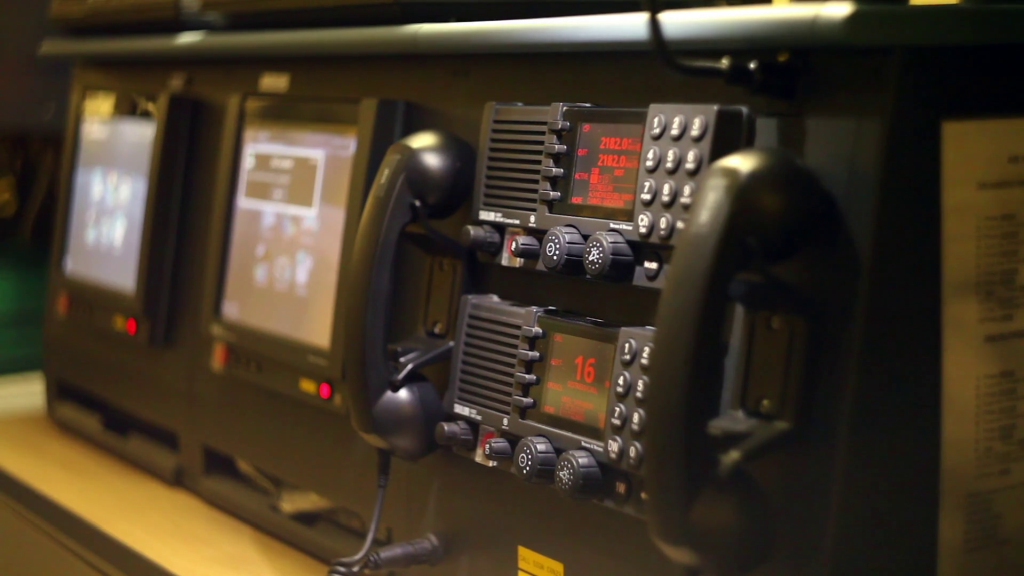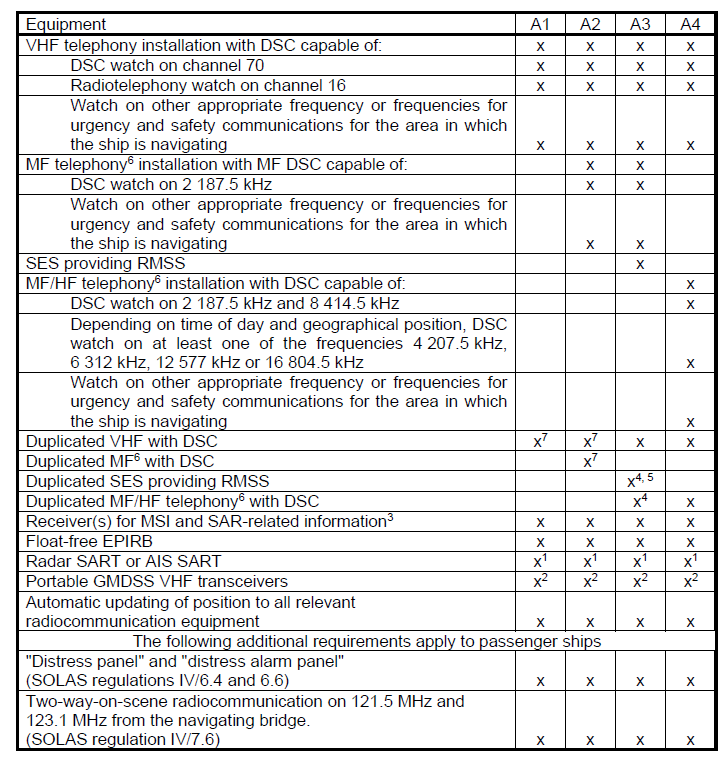
(www.MaritimeCyprus.com) IMO MSC 105 adopted amendments SOLAS chapter II-1, III, IV and V, the appendix (Certificates) and the 1988 SOLAS Protocol (Certificates); through resolution MSC.496(105) and resolution MSC.497(105). The amendments enter into force on 1 January 2024.
The revision of the Global Maritime Distress and Safety System (GMDSS) aims to allow the use of modern communication systems, while removing the requirements for carrying obsolete systems.
WHAT ARE THE KEY AMENDMENTS TO SOLAS CHAPTER IV RELATED TO RADIOCOMMUNICATIONS EFFECTIVE FROM 1 JANUARY 2024?
The amendments to SOLAS Chapter IV include the use of generalized terms for GMDSS technologies, consolidation of provisions for VHF radio telephone apparatus and SART (Search and Rescue Transponder), changes in sea area coverage, and the removal of the NBDP (Narrow Band Direct Printing) function for MF/HF radio installations.

WHAT ARE THE CONSEQUENTIAL AMENDMENTS TO IMO INSTRUMENTS RELATED TO GMDSS MODERNIZATION?
Consequential amendments have been made to the 1994 and 2000 High-Speed Craft (HSC) Codes, the Special Purpose Ships (SPS) Code and the Mobile Offshore Drilling Units (MODU) Code:
| Resolution | |
| Amendments to the International Code of Safety for High-Speed Craft, 1994 (1994 HSC CODE | MSC.498(105) |
| Amendments to the International Code of Safety for High-Speed Craft, 2000 (2000 HSC CODE) | MSC.499(105) |
| Amendments to the Code of Safety for Special Purpose Ships, 1983 (1983 SPS Code); | MSC.502(105) |
| Amendments to the Code of Safety for Special Purpose Ships, 2008 (2008 SPS Code) | MSC.503(105) |
| Amendments to the Code for the Construction and Equipment of Mobile Offshore Drilling Units, 1979 (1979 MODU Code) | MSC.504(105) |
| on Amendments to the Code for the Construction and Equipment of Mobile Offshore Drilling Units, 1989 (1989 MODU Code); | MSC.505(105) |
| Amendments to the Code for the Construction and Equipment of Mobile Offshore Drilling Units, 2009 (2009 MODU Code) | MSC.506(105) |
IMO also adopted a substantial number of amendments or revisions to existing related resolutions and guidelines, including performance standards for relevant equipment:
| Resolution | |
| System performance standard for the promulgation and coordination of maritime safety information using high-frequency narrow-band direct-printing | MSC.507(105) |
| Performance standards for the reception of maritime safety information and search and rescue related information by MF (NAVTEX) and HF | MSC.508(105) |
| Provision of radio services for the Global Maritime Distress and Safety System (GMDSS) | MSC.509(105) |
| Performance standards for search and rescue radar transponders; | MSC.510(105) |
| Performance standards for shipborne VHF radio installations capable of voice communication and digital selective calling; | MSC.511(105) |
| Performance standards for shipborne MF and MF/HF radio installations capable of voice communication, digital selective calling and reception of maritime safety information and search and rescue related information | MSC.512(105) |
| Performance standards for Inmarsat-C ship earth stations capable of transmitting and receiving direct-printing communications; | MSC.513(105) |
| Performance standards for survival craft portable two-way VHF radiotelephone apparatus | MSC.515(105) |
| Amendments to the Performance standards for radiocommunication equipment (resolution MSC.80(70)) | MSC.516(105) |
| Performance standards for a shipborne integrated communication system (ICS) when used in the Global Maritime Distress and Safety System (GMDSS). | MSC.517(105) |
WHY WERE TWO-WAY VHF RADIO TELEPHONE APPARATUS AND SART (SEARCH AND RESCUE TRANSPONDER) PROVISIONS DELETED FROM SOLAS III/REG.6 AND CONSOLIDATED IN SOLAS IV/REG.7?
The consolidation was part of the GMDSS modernization efforts to adapt to modern communication systems and remove carriage requirements for obsolete systems, simplifying regulations and improving clarity.
WHAT CHANGES HAVE BEEN MADE REGARDING THE USE OF VHF-EPIRB IN SEA AREA A1?
VHF-EPIRB will no longer be accepted in lieu of satellite EPIRB for sea area A1. Ships operating exclusively in sea area A1 should replace VHF-EPIRB with satellite-EPIRB.
HOW HAVE THE REQUIREMENTS FOR SHIPBORNE GMDSS EQUIPMENT CHANGED AFTER 1 JANUARY 2024?
Except for replacing VHF-EPIRB with satellite-EPIRB in sea area A1, no additional or replacement GMDSS equipment is required. However, the function of NBDP for MF/HF radio installation is no longer required.
HOW CAN SHIP OWNERS/OPERATORS SELECT THE RMSS-SES (RECOGNIZED MOBILE SATELLITE SERVICE SHIP EARTH STATION) (E.G., INMARSAT, IRIDIUM) TO BE INSTALLED ON BOARD, AND WHAT CONSIDERATIONS SHOULD BE TAKEN INTO ACCOUNT?
Ship owners/operators can select RMSS-SES based on coverage areas. Each RMSS system provides different communication coverage. The selected RMSS-SES should be able to receive EGC (enhanced group call) broadcasting in the intended operational area, and consideration should be given to MSI (Maritime Safety Information) and SAR (Maritime Search and Rescue) information obtained by other onboard equipment. However, the installation of RMSS-SES (i.e. IRIDIUM in lieu of INMARSAT) is subject to flag’s policy and acceptance.
WHAT IS THE SIGNIFICANCE OF THE DELETION OF THE NBDP (NARROW BAND DIRECT PRINTING) FUNCTION FOR MF/HF RADIO INSTALLATION, AND HOW DOES IT IMPACT SHIPS?
The Narrow Band Direct Printing (NBDP) function is no longer required on 1 January 2024. For ships, the marking of the NBDP for MF/HF radio installation will be deleted on relevant statutory certificates issued/ renewed after 1 January 2024.
In addition, the alternative method of compliance for operation in Sea Area A3 using VHF + MF/HF (DSC + radiotelephony + NBDP) + Secondary means (EPIRB or Ship Earth Station (SES)) is no longer acceptable. Therefore, from 1 January 2024 existing ships operating in Sea Area 3 which have only MF/HF equipment and no SES, at, a minimum will need to install one SES.
FOR THOSE SHIPS CURRENTLY USING DIRECT PRINTING TELEGRAPHY (NBDP) TO FULFIL THE ROLE OF “DUPLICATION” FOR A SINGLE INMARSAT C (IN SEA AREA A3), WOULD THIS RADIO TELEX NO LONGER BE CONSIDERED?
Direct-printing telegraphy (NBDP) is being removed from the GMDSS regulations as of 1 January 2024, therefore transmitting and receiving distress and safety communications using direct-printing telegraphy (NBDP) do not form part of the GMDSS requirement and hence need not be fitted on board as duplicate equipment.
CAN DIFFERENT TYPES OF RMSS-SES (RECOGNIZED MOBILE SATELLITE SERVICE SHIP EARTH STATION) BE INSTALLED AS PRIMARY AND DUPLICATED SYSTEMS ON BOARD, AND ARE THERE ANY RESTRICTIONS?
Yes, but an RMSS-SES with lesser coverage should be designated as the primary system to determine the coverage of sea area A3. The duplicated system's coverage should include that of the primary system, and RMSS-SES with no correlation with the primary system's communication range cannot be accepted as a duplicated system.
CURRENTLY THERE IS A REQUIREMENT FOR A NAVTEX (NAVIGATIONAL TELEX MESSAGES) RECEIVER AND AN MSI RECEIVER (INMARSAT / IRIDIUM). WHEN THE CHANGES COME INTO FORCE, IS THERE STILL A REQUIREMENT TO HAVE NAVTEX, OR IS THE MSI RECEIVER IN THE INMARSAT C/IRIDIUM SUFFICIENT?
E.g., if we supply a new build for A3, is the supply of an Inmarsat / Iridium MSI receiver sufficient to satisfy the new regulation, or does a NAVTEX need to be supplied too, and if a NAVTEX is faulty but the ship has Inmarsat MSI RX, can the NAVTEX be removed?
According the MSC.1/Circ.1645, para.4, ships should be provided with equipment appropriate for the entire voyage in which the ship is engaged, as follows:
“.1 a receiver capable of receiving international NAVTEX service broadcasts if the ship is engaged on voyages in any area in which an international NAVTEX service is provided; and
.2 if the ship is engaged in voyages in which an international NAVTEX service is not provided:
.1 a receiver capable of receiving HF NBDP service when a ship is engaged in voyages where such service is provided;
.2 receiver(s) capable of receiving broadcasts from an international EGC service identified (SafetyNet or International Iridium SafetyCast service) which provide(s) a service for the operating areas. “
So, depending on the operating areas and or/not if international NAVTEX service is provided.
Refer to the attached circular MSC.1/Circ.1645

IS THERE A TABLE SUMMARIZING THE EQUIPMENT THAT ARE REQUIRED TO BE INSTALLED ON SOLAS SHIPS?
The revised circular COMSAR.1/Circ.32/Rev.2 - Harmonization of GMDSS requirements for radio installations on board SOLAS ships, includes a table summarizing GMDSS equipment requirements in force for all ships to which SOLAS chapter IV applies:


Refer to circular COMSAR.1/Circ.32/Rev.2
FOR SHIPS IN SERVICE, ON WHAT DATE SHOULD SOLAS CERTIFICATES BE REISSUED?
Bearing in mind that amendments to SOLAS chapter IV, and to the corresponding parts of the 1994 and 2000 HSC Codes, the 1983 and 2008 SPS Codes and the 1979, 1989 and 2009 MODU Codes do not bring substantive changes to the radio installations on existing ships, as they are introduced mostly to accommodate any new future technologies or the existing arrangements by generalizing, modifying and/or relocating the expressions therein, therefore and unless ships are subject to modifications (e.g. changes described in this FAQ, such as VHF-EPIRB, NBDP in sea area A3), IMO confirmed (ref. MSC 105/20 para. 3.12) that in accordance with the provisions in paragraph 3.1 of the Guidance provided in MSC-MEPC.5/Circ.6, re-issuance of the relevant certificates and their supplements, if any, after entry into force of the amendments, would not be necessary until their expiry(unless otherwise instructed by the ship’s Flag State).
IT SEEMS THAT THERE ARE DELAYS IN AVAILABILITY OF NEW GMDSS EQUIPMENT COMPLIANT WITH THE REVISED PERFORMANCE STANDARDS AND EXISTING VHF RADIOCOMMUNICATION EQUIPMENT MEETING THE REVISED FREQUENCIES AND CHANNELLING ARRANGEMENTS CONTAINED IN APPENDIX 18 TO THE ITU RADIO REGULATIONS?
Indeed, delays in developing relevant IEC standards have been reported to the IMO highlighting the risk that there may not be GMDSS equipment complying with the revised Performance standards for implementation on 1 January 2024. Consequently, IMO approved circular MSC.1/Circ.1676 permitting until 1 January 2028 the continued installation new shipborne VHF radio installations, shipborne MF and MF/HF radio installations or Inmarsat-C ship earth stations conforming to former performance standards.
Refer to the attached MSC.1/Circ.1676
In addition, IMO agreed to extend the deadline for updating VHF radiocommunication equipment, in accordance with MSC.1/Circ.1460/Rev.3, to 1 January 2028, in alignment with the above decision.
Refer to the attached MSC.1/Circ.1460/Rev.4.
SHIP OWNERS AND MANAGERS ARE ADVISED TO TAKE ALL APPROPRIATE ACTIONS TO ENSURE COMPLIANCE TO THE REVISED IMO REQUIREMENTS.
- COMSAR.1-Circ.32-Rev.2 - Harmonization Of Gmdss Requirements For Radio Installations On Board Solas Ships (Secretariat).pdf
- MSC.1-Circ.1460-Rev.4 - Guidance On The Validity Of Radiocommunications Equipment Installed And Used On Ships (Secretariat).pdf
- MSC.496(105).pdf
- MSC.1-Circ.1676 - Delays Affecting The Availability Of New Gmdss Equipment CompliantWith The Revised Perform... (Secretariat).pdf













